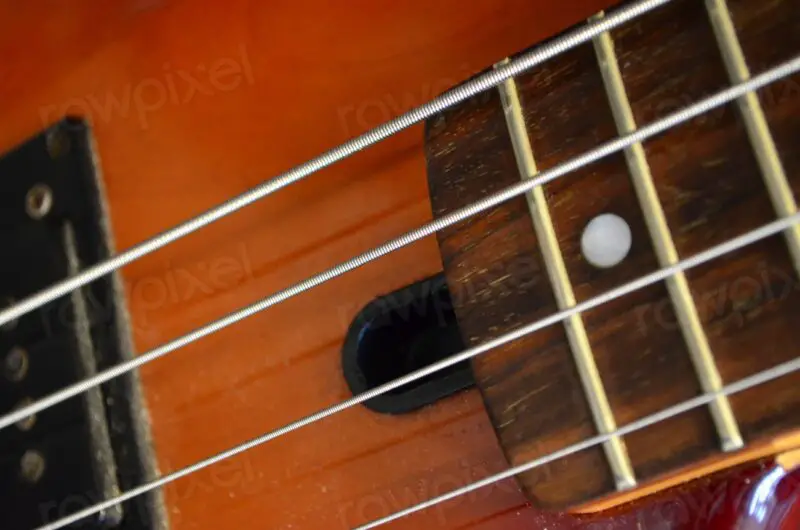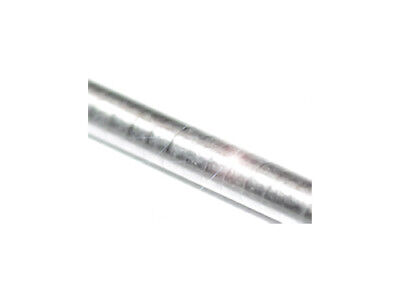The Secret Sauce of Legendary Bass Guitarists
In the world of bass guitar, a secret sauce sets legendary players apart from the rest – flatwound strings. These specialized strings have a unique texture and tone that elevate your playing experience. With their smooth, silky feel, flatwound strings offer a comfortable and effortless playing experience unrivaled by other strings.
But it’s not just about the feel; flatwound strings impart a distinct sound to your bass. Known for their warm and mellow tone, these strings produce a rich and full-bodied sound perfect for jazz, blues, and other genres requiring a smooth and refined sound. Whether you’re looking to capture the resounding, resonant thump of Motown or the soft, articulate lines of jazz fusion, flat-wound strings are the key to unlocking that legendary bass tone.
So, if you want to take your bass playing to the next level, it’s time to give flatwound strings a try. Experience the secret sauce that legendary bass guitarists swear by and elevate your playing to new heights.
Table of Contents
Benefits of using flatwound strings for bass guitar
Flatwound strings offer a range of benefits that can significantly enhance your bass-playing experience. Firstly, their smooth surface reduces finger noise, making them ideal for players who want a clean and clear sound. This is particularly important for genres like jazz and blues, where precision and articulation are key. Secondly, flatwound strings have a longer lifespan than roundwound strings, meaning less frequent string changes and more time spent playing. Lastly, the unique tone of flatwound strings adds a touch of elegance and sophistication to your playing, making them a favorite among jazz and fusion bassists.
The history and evolution of flat-wound strings
Flatwound strings have a rich history that dates back to the early days of electric bass guitar. The first flatwound strings were made by wrapping a wire core with a flat ribbon of metal, typically stainless steel or nickel. Over the years, manufacturers have experimented with different materials and construction techniques to refine the tone and feel of flatwound strings. Today, you can find various flatwound strings on the market, each offering unique characteristics.
How flatwound strings affect tone and sound
The tone and sound produced by flatwound strings are distinct and highly sought after by bass players. Due to their smooth surface and lack of ridges, flatwound strings produce less string noise and have a warmer, mellower tone than roundwound strings. This makes them particularly well-suited for genres that require a smooth and refined sound, such as jazz, blues, and soul. The rich and full-bodied tone of flatwound strings is often described as “vintage” or “classic,” it has become synonymous with legendary bass players.
Tips for choosing the right flat wound strings for your bass guitar
When choosing flat-wound strings for your bass guitar, there are a few factors to consider. Firstly, you’ll want to consider the gauge of the strings. Lighter gauge strings offer a brighter and more articulate sound, while heavier gauge strings provide a deeper, resonant tone. It’s also important to consider the material of the strings. Stainless steel strings tend to have a brighter and more focused sound, while nickel strings offer a warmer and smoother tone. Lastly, consider your playing style and genre preferences. Different brands and models of flat-wound strings can have subtle variations in tone and feel, so it’s worth experimenting to find the perfect match for your bass.
Techniques and playing styles enhanced by flat-wound strings
Flatwound strings can greatly enhance specific techniques and playing styles on the bass guitar. Slap bass, for example, is a technique that involves striking the strings with the thumb and popping them with the fingers to create a percussive sound. The smooth surface of flat wound strings allows for fast and fluid slapping, making them a popular choice among slap bass players. Flat-wound strings are well-suited for playing with a pick, as they offer a consistent and even tone across all strings. This makes them ideal for genres like rock and funk, where a punchy and defined sound is desired.
Maintenance and care for flat-wound strings
Practicing proper maintenance and care is essential to keep your flat-wound strings in optimal condition. After each playing session, wipe down the strings with a clean cloth to remove any dirt, sweat, or oils that may have accumulated. This will help prolong the lifespan of the strings and maintain their smooth feel. Additionally, it’s a good idea to periodically clean the fretboard and bridge of your bass to prevent any buildup that could affect the strings. Finally, be mindful of the tension and intonation of your bass, as improper setup can put unnecessary strain on the strings and affect their tone and playability.
Famous bass guitarists who use flat wound strings
Many legendary bass guitarists swear by flat wound strings, making them an integral part of their signature sound. James Jamerson, the iconic bassist for Motown Records, was known for his deep and resonant tone, which he achieved by using flatwound strings. Jaco Pastorius, considered one of the greatest bass players of all time, also used flat wound strings to achieve his signature fretless sound. Other notable bassists who favor flat-wound strings include Paul McCartney, Carol Kaye, and Marcus Miller. Their use of flat wound strings is a testament to the unique and versatile sound that can be achieved with these specialized strings.
Where to buy flatwound strings and recommended brands.
If you’re a bass guitarist looking for a smoother and mellow tone, flatwound strings can be your go-to option. These strings have a flat outer wrapping made of ribbon wire, giving your bass a warm and round sound. You can find many flatwound strings at music stores and online retailers. Some of the well-known and reputable brands that offer high-quality flatwound strings include D’Addario, Thomastik-Infeld, La Bella, and Rotosound.
Each brand offers different models and gauges to suit different playing styles and preferences. For instance, D’Addario offers the Chromes series a polished, smooth finish that provides comfortable playability and a consistent sound. Thomastik-Infeld, on the other hand, provides the Jazz Flatwound series, which has a unique spiral design that enhances the sustain and intonation of your bass.
La Bella offers the Deep Talkin’ flatwound series, which has a flexible and responsive feel that gives a warm and vintage tone. Rotosound provides the Tru Bass series with a distinctive thump and consistent sound across the fretboard.
It’s worth experimenting with different brands and models to find the perfect set of flatwound strings for your bass guitar. You can try different gauges, materials, and constructions to see which suits your playing style and preferences. With the correct set of flatwound strings, you can achieve a smooth and rich tone that complements various genres, such as jazz, blues, funk, and soul.

Tips for transitioning from roundwound to flatwound strings
Transitioning from roundwound to flatwound strings can be a bit challenging for guitar players, but it is worth the effort as it can significantly impact the sound of your guitar. Flatwound strings are known for producing a warmer, mellow tone compared to the bright and punchy sound of roundwound strings. To make the switch, you’ll need to consider a few things.
Firstly, flatwound strings have a different feel than roundwound strings. They are smoother and have less texture, which can initially feel strange. Additionally, flatwound strings have less sustain and a lower tension, which can affect your playing style.
To ease into the transition, it’s recommended to start with a lighter gauge of flatwound strings and gradually work your way up. This will help you get used to the new feel and tension. Another essential factor to consider is the setup of your guitar. Flat wound strings require a different setup than roundwound strings.
You may need to adjust the strings’ height, intonation, and truss rod to get the best sound and playability. In summary, transitioning from roundwound to flat-wound strings can take some time and effort, but it is ultimately worth it. Following these tips, you can switch smoothly and enjoy the warmer, mellower tones of flatwound strings.
Conclusion: Exploring the unique playing experience of flatwound strings
Flat wound strings are the secret sauce that elevates the playing experience of legendary bass guitarists. Their smooth feel, warm tone, and reduced finger noise make them a favorite among jazz, blues, and fusion bassists. Whether aiming to capture the iconic Motown sound or explore the melodic possibilities of jazz fusion, flat-wound strings offer a unique and versatile playing experience. So, to take your bass playing to the next level, try flatwound strings and unlock the secret sauce of legendary bass guitarists.



